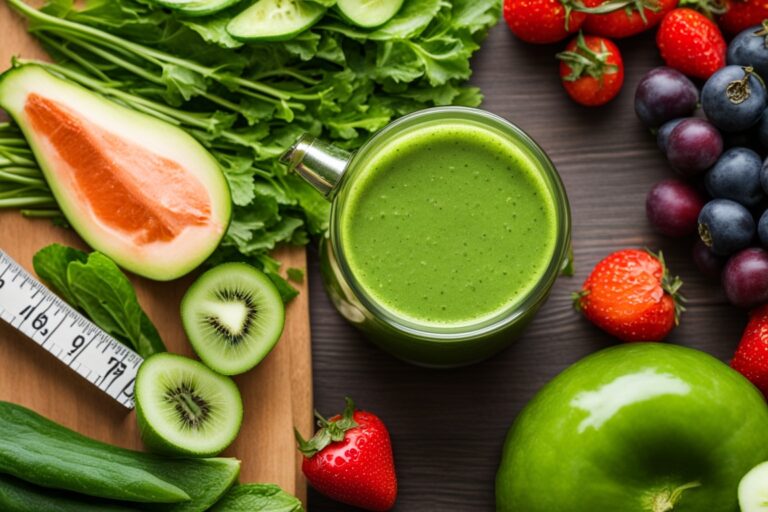Ever thought biking could help fight off stubborn belly fat? Many enjoy biking for fun, but how it helps with fat loss is a mystery to many. This post looks into if cycling truly burns belly fat, debunking myths and diving into the science of biking for fat loss.
Key Takeaways
- Cycling can enhance overall fat loss rather than specifically targeting belly fat.
- Training in the fat-burning zone significantly improves cycling endurance and aerobic capacity.
- High-Intensity Interval Training (HIIT) is particularly effective for fast fat loss.
- A combination of cycling and a healthy diet can help lower belly fat levels.
- Implementing strength training while cycling aids in preserving muscle mass during weight loss.
Understanding Belly Fat and Its Risks
Belly fat is more than just a beauty concern. It’s linked to serious health concerns. Visceral fat, found around the belly, raises the risk of metabolic problems. People with abdominal obesity are more likely to get heart disease, type 2 diabetes, and insulin resistance.
Men tend to gain belly fat more than women. Researchers like Ritchie and Connell point out the risks. They show how belly fat leads to weight gain and health issues. The risks include high blood pressure, changed cholesterol levels, and poor metabolic health.
Knowing how body fat is spread helps in losing weight effectively. While targeting belly fat is debated, losing overall body fat helps reduce belly fat. A balanced lifestyle with more exercise and healthy eating is key.
How Cycling Affects Overall Fat Loss
Cycling is a great way to lose fat when done regularly. It’s an aerobic exercise that helps burn belly fat. A 155-pound person cycling at 12 to 13.9 miles per hour can burn about 298 calories in 30 minutes. If you weigh 185 pounds, you could burn around 355 calories doing the same thing.
For those who like to go faster, cycling at 14 to 15.9 miles per hour can burn up to 372 calories in 30 minutes. If you weigh 185 pounds, you could burn about 444 calories. These benefits show how cycling helps with weight management and improving body composition.
Regular cycling also boosts your metabolism. This means you burn calories even after you finish working out. It makes it easier to lose weight. The American Council on Exercise suggests cycling for at least 150 minutes a week to see the best results.
Cycling is great because it combines endurance with high-intensity intervals. Adding High-Intensity Interval Training (HIIT) to your cycling routine can cut fat mass by up to 10% in 12 weeks. This not only helps with fat loss but also improves your heart health and fitness level.

Cycling outdoors works out many muscle groups, like the hamstrings, quadriceps, and calves, which helps with fat burning. Indoor cycling is convenient but might not work as many muscles as outdoor cycling. Yet, both types of cycling help with fat loss, making cycling a flexible and easy workout option.
| Weight (lbs) | 30 min at 12-13.9 mph (calories burned) | 30 min at 14-15.9 mph (calories burned) |
|---|---|---|
| 155 | 298 | 372 |
| 185 | 355 | 444 |
Does Riding a Bike Burn Belly Fat?
Cycling is a great way to lose fat, especially around the belly. While some might want to target belly fat directly, science shows that losing fat overall is the main goal. Riding a bike helps burn calories and boosts fitness. Experts talk about how cycling helps with losing belly fat and balancing energy for weight loss.
Research Insights on Cycling and Fat Loss
Recent studies show that biking is a great way to burn calories. For example, a 30-minute bike ride can burn calories depending on your weight. A 125-pound person might burn 210 to 311 calories, while a 155-pound person could burn 260 to 391 calories. If you weigh 185 pounds, you could burn 311 to 466 calories.
Outdoor biking can burn even more calories. At speeds of 14-15.9 miles per hour, a 125 to 185-pound person can burn 300 to 444 calories. At 20 miles per hour, calorie burn can go up to 495-733 calories in the same time. This shows how biking can really help with fat loss and burning energy.
Energy Balance: The Key to Weight Loss
Keeping an energy balance is key for losing weight. Trying to eat 500 fewer calories each day through diet and exercise can lead to losing about one pound of fat weekly. Factors like gender can affect how fast you lose fat, but the goal is still to create a calorie deficit for fat loss.
It’s important to know that you can’t just target specific areas for fat loss. Losing fat effectively comes from a balanced diet and exercise routine. Sticking with activities like biking not only burns calories but also builds a strong foundation for health and wellness.
Best Bike Workouts for Burning Belly Fat
Looking to lose belly fat? Adding bike exercises to your routine can help. High-Intensity Interval Training (HIIT) and moderate intensity cycling are top choices. They are key to a good fitness plan.
High-Intensity Interval Training (HIIT) for Cycling
HIIT cycling mixes intense sprints with rest periods. It’s great for losing belly fat, especially the deep kind. You burn lots of calories and boost fat-burning hormones. A typical HIIT session includes:
- 5-minute warm-up at a moderate pace.
- 1-2 minutes of maximum effort.
- 1-2 minutes of easy pedaling for recovery.
- Repeat the cycle for a total of 10-15 intervals.
Doing HIIT workouts 2-3 times a week helps reduce belly fat. It keeps sessions interesting by changing routines every few weeks.
Moderate Intensity Cycling: A Steady Approach
Moderate intensity cycling is steady and sustainable. You cycle at a pace that gets your heart rate up to 50-70% of its max. Doing 30 to 60-minute sessions a few times a week burns calories:
- A daily hour of cycling can burn up to 500 calories.
- This means you can lose about 3,500 calories in a week, which is one pound of fat.
Adding moderate cycling to your routine helps with fat loss and heart health. For the best results, mix HIIT and moderate cycling. This ensures a balanced fitness plan.

Indoor vs. Outdoor Cycling for Fat Reduction
Indoor and outdoor cycling are both great for losing fat. Each has its own benefits. Indoor cycling lets you work out in a controlled place with structured classes. These classes focus on intense workouts, helping you stay motivated and focused.
By going to these classes regularly, you can burn a lot of calories. You might lose 1,200 to 4,000 calories per week from just three to four classes. This makes indoor cycling a powerful way to shed pounds.
Outdoor cycling offers a different kind of challenge. You’ll ride on hills and see different landscapes, which can make your workout more exciting. This type of cycling can burn more calories because you’re using different muscles to climb hills.
On average, outdoor cycling can burn 400 to 1,000 calories per hour. The exact number depends on how hard you ride and how long you ride.
How well cycling works for losing fat also depends on how often you do it. A study in the European Journal of Obesity found that cycling for an hour and a half a week can help women lose about two pounds. Regular cycling, both indoors and outdoors, can lead to weight loss and better health.
For the best results, try mixing indoor and outdoor cycling. This way, you get the structure and community of indoor classes and the fresh air and beauty of outdoor rides. Whether you prefer indoor or outdoor cycling, it’s a great way to lose fat.
| Aspect | Indoor Cycling | Outdoor Cycling |
|---|---|---|
| Environment | Controlled, climate-regulated | Varied terrain, open space |
| Calorie Burn | 1,200 – 4,000 calories weekly | 400 – 1,000 calories per hour |
| Workout Type | Structured classes with high intensity | Distance riding with terrain challenges |
| Progress Tracking | Easier through classes and metrics | Less structured, varies by ride |
| Impact | Low impact, easier on joints | May vary based on terrain |
Dietary Considerations to Maximize Fat Loss
What you eat greatly affects how well cycling helps you lose fat. Eating the right foods boosts your energy and supports your body during tough workouts. Eating a mix of whole foods helps balance your performance and weight.
Foods to Include for Effective Weight Loss
To lose fat while cycling, picking the right foods is key. Add these food groups to your meals:
- Lean Proteins: Chicken, turkey, fish, legumes, and tofu help muscles recover and keep you full.
- Whole Grains: Brown rice, quinoa, and oats give you energy for long rides.
- Healthy Fats: Avocados, nuts, and olive oil are good for your health and metabolism.
- Fruits and Vegetables: Eating different colors of produce gives you vitamins, minerals, and antioxidants.
Avoiding Processed Foods for Better Results
Staying away from processed foods is key for losing fat. These foods have lots of empty calories, which can lead to eating too much and feeling tired. Eating fewer refined sugars and artificial ingredients can make you perform better on your bike. Here are some tips:
- Drink fewer soft drinks, eat less junk food, and avoid snacks with lots of added sugar.
- Try to eat whole, unprocessed foods as much as you can.
- Make your own snacks, like rice cakes, for energy during long rides without getting too full.
- Keep a food diary to track what you eat and find ways to eat better.

Additional Strategies for Reducing Belly Fat
To effectively reduce belly fat, try different strategies together. Adding strength training to your cycling routine can make a big difference. This mix boosts your fitness and helps keep muscle mass while losing weight. Strength training is key for cyclists, keeping metabolism healthy and maintaining the power needed for cycling.
Combining Cycling with Strength Training
Adding resistance exercises to your routine helps with belly fat. Do two to three strength-training sessions each week to go with your cycling. Using free weights, resistance bands, or body-weight exercises helps grow lean muscle. This is important when you’re cutting calories. More muscle means a higher resting metabolic rate, helping you lose fat more effectively.
The Importance of Rest and Recovery
Rest and recovery are crucial in your training plan. Enough rest helps your muscles repair and get stronger after hard workouts. Not resting enough can lead to overtraining, slowing down your weight loss. Including rest days helps you keep up with cycling and leads to better results over time.
For the best results in losing belly fat with cycling, combine strength training and focus on recovery. This approach not only speeds up fat loss but also improves your athletic performance.
Conclusion
Cycling is a strong ally in fighting belly fat, especially when paired with smart weight loss plans. It helps you balance your energy and burn calories effectively. By mixing high-intensity and moderate cycling, you can lose about 1 kg a week, which is sustainable.
Commit to cycling 3-5 times a week to burn more calories and enjoy the benefits of EPOC, which boosts your metabolism for up to 36 hours. Varying your routes and setting goals will keep you excited about your fitness journey.
Improve your cycling by eating well, fueling right, and adding strength training to work your core. Cycling is more than a workout; it’s a lifestyle that supports your health and fitness goals. Use these tips to help you reach your wellness goals.









